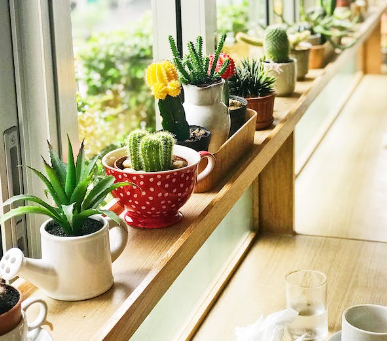Plants are essential to maintaining a healthy ecosystem and are known for producing oxygen during the day through photosynthesis. However, there are some plants that can also generate oxygen at night, making them ideal for indoor environments.
Here's a list of 10 plants that produce oxygen at night:
Snake
Plant (Sansevieria Trifasciata)
The Snake Plant, also known as Mother-In-Law’s Tongue, can grow in low-light and drought conditions, and it can generate oxygen at night. This makes it an excellent plant for bedrooms.
Aloe
Vera (Aloe Vera)
Aloe Vera is a succulent plant with medicinal properties that can also produce oxygen at night. This feature makes it an ideal plant for purifying indoor air.
Areca
Palm (Dypsis Lutescens)
The Areca Palm is a tropical plant that can grow up to 6-7 feet tall. It can humidify the air and produce oxygen at night, making it a good choice for improving indoor air quality.
Spider
Plant (Chlorophytum Comosum)
The Spider Plant is easy to grow and maintain, and it has air-purifying properties. It can also produce oxygen at night, making it ideal for improving indoor air quality.
Peace
Lily (Spathiphyllum)
The Peace Lily is a beautiful indoor plant that can thrive in low-light conditions. It can remove toxins from the air and produce oxygen at night, making it a great choice for improving indoor air quality.
Gerbera
Daisy (Gerbera Jamesonii)
The Gerbera Daisy is a colorful indoor plant that can produce oxygen at night. It also has air-purifying properties that help remove harmful chemicals from the air.
Golden
Pothos (Epipremnum Aureum)
The Golden Pothos is an easy-to-grow indoor plant that can purify the air and produce oxygen at night. This makes it an excellent choice for improving indoor air quality.
Bamboo
Palm (Chamaedorea Seifrizii)
The Bamboo Palm is a tropical plant that can grow up to 12 feet tall. It can remove toxins from the air and produce oxygen at night, making it a great plant for improving indoor air quality.
Rubber
Plant (Ficus Elastica)
The Rubber Plant is a popular indoor plant with air-purifying properties. It can also produce oxygen at night, making it a good choice for improving indoor air quality.
Peepal
Tree (Ficus Religiosa)
Peepal Tree, also known as the sacred fig, is an evergreen tree that is considered sacred in many cultures. It is known for producing oxygen even at night, making it an ideal plant for improving air quality indoors.
In summary, adding oxygen-generating plants to indoor environments can significantly improve air quality and promote better health. These plants produce oxygen and help remove harmful chemicals and toxins from the air, making them an excellent addition to any home or office space. Adding some of these plants to your living space can help you breathe easier and feel more refreshed.


























